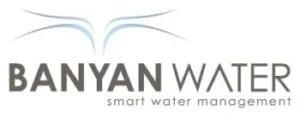Cooling towers account for a substantial amount of water used in commercial properties. In turn, business entities should strive to implement conservation technologies and innovative programs to reduce water consumption and increase cost savings. Despite the obvious environmental and economic impacts, water management with regards to cooling towers also presents property owners and facility managers with significant consumer protection and human health and safety challenges.
As recently as 2017, Disney suffered negative publicity, scrutiny and civil liability when at least two cooling towers in their theme park had to be shut down due to public health concerns. In this instance, improperly maintained systems led to several guests contracting Legionnaire’s Disease, a life-threatening infection.
In a tragic outbreak in 2015, more than a dozen lives were lost to the waterborne bacteria in New York City’s Bronx Borough. Again, the source of the infection was traced back to cooling towers; this time in a historic hotel. The large amounts of water stored in cooling towers are a prime space for bacteria and other microbial contaminants to fester if the units are not properly maintained and disinfected.
If an upscale, boutique hotel and a hospitality giant such as Disney can fail to recognize cooling tower risk and ultimately pay a steep price for their lack of attention, it should send a cautionary signal to all property managers that no one is immune to this problem. Cooling tower upkeep is every property manager’s responsibility.
Bio-contamination aside, improper service programs can also lead to the corrosion of plant, property and equipment. Previously, facility managers evaluated the protection of assets like cooling towers from a preventative or reactionary point of view. Even regular inspections come at the cost of further logistics and man-hours. Often, cursory inspections are nominal occurrences conducted internally by those who are not specialized. Conversely, professional consultation can be cost prohibitive, especially for companies with a broad portfolio. The immediate information that technology solutions convey to decision makers can help diagnose problems before they manifest.
The balance of cost savings, ecology and safety is achieved through chemistry and technology. In no small part, chemical treatment programs protect the tenants, occupants and employees of structures from biohazards. IoT-enabled sensors and meters empower facility managers to monitor water in real time. A cloud-based software platform can accurately visualize and securely manage a multitude of cooling tower systems across an entire organization. Therefore, even the reduction of chemical inputs resulting in cost savings will not increase health risks. Tracking cycles of concentration, temperature, equipment malfunctions and other data ensures optimal, clean water. From a business perspective, technology increases efficiency, bolstering net income and achieving sustainable goals.
Take control of your water use. Learn how to mitigate risk by automating and optimizing cooling tower systems at your facilities here.
